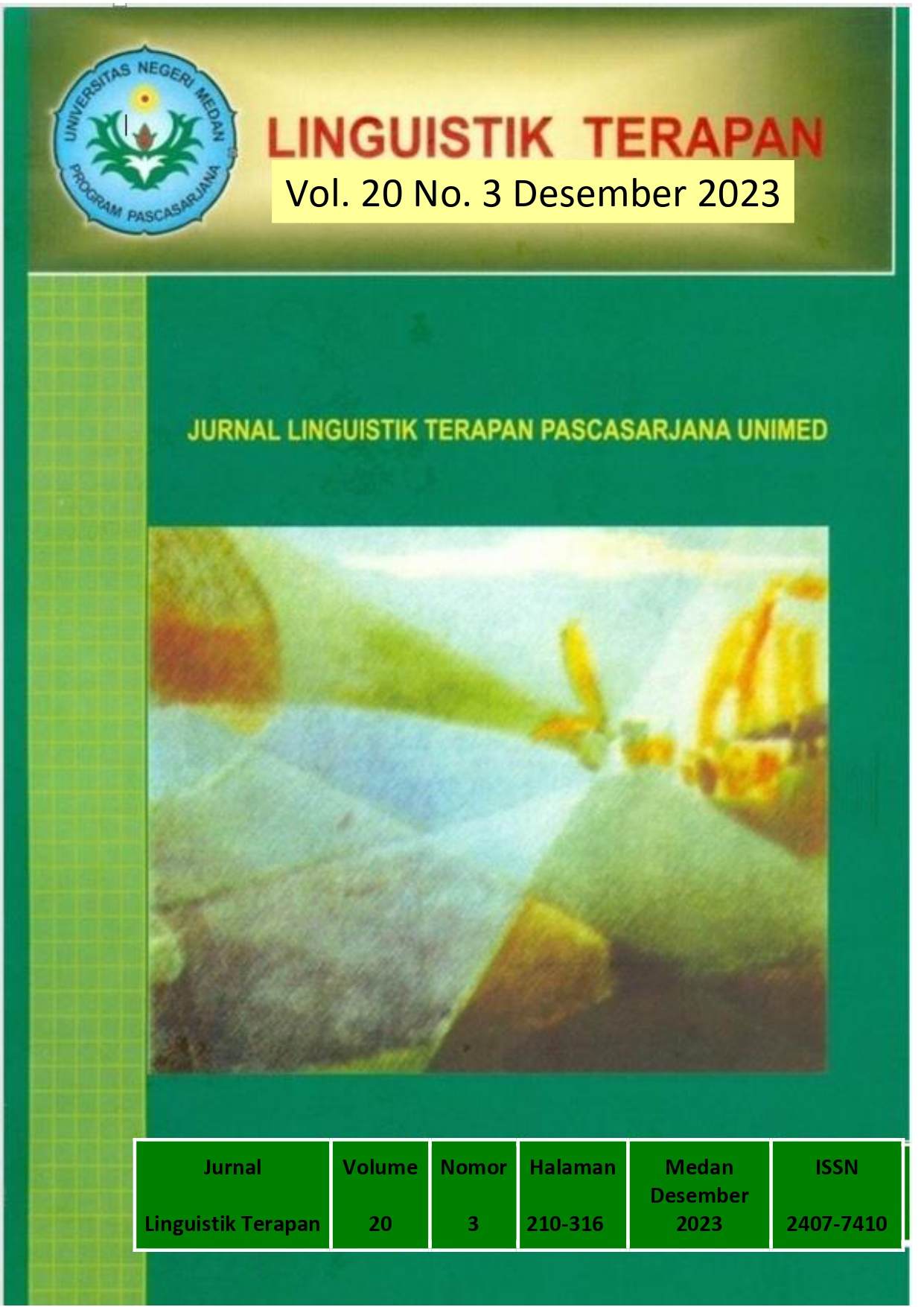LANDSCAPE LINGUISTICS OF PUBLIC PLACES IN LABUHANBATU UTARA
DOI:
https://doi.org/10.24114/lt.v20i3.58573Keywords:
Landscape Linguistic, Public Place, and Labuhanbatu UtaraAbstract
This study aims define which languages predominate in the Labuhanbatu Utara landscape, how texts are used, and why the texts are used. The study also suggests that societies, stakeholders and governments value local languages (expressions of cultural identity) and the Indonesian language as national identities to communicate formally or informally, especially in public settings. A descriptive qualitative design was used for this research. Bogdan and Biklen (1992) said that qualitative research is descriptive, i.e., it explains what is happening and what the data reveals. The research data was taken from the writings displayed on the nameboard, roadmap, mosque, store, pamphlet, billboard, etc.. installed in the data source in Labuhanbatu Utara. The study's data collection techniques included observation and documenting. According to the study's findings, the Indonesian language and local language have been used more and more in the past, especially in the landscape of government areas.References
Ardhian, Dany and Yusri Fajar. (2017). Linguistics Lanscape in Malang City, East Java. JETAFL (Journal of English Teaching as a Foreign Language). Brawijaya University, Indonesia. Accesed on November 2022 ISSN: 2459-9506
Backhaus, P. (2007). Linguistic Landscapes: A Comparative Study of Urban Multilingualism in Tokyo. Clevedon Buffalo: Multilingual Matters.
Blommeart, J., dan Ico, M. (2014). Ethnographic Linguistic Landscape Analysis and Social Change: A case study. Tilburg University: Tilburg Papers in Culture Studies.
Cenoz, J. & Gorter, D. (2006). Linguistic Landscape and Minority Languages. International Journal of Multilingualism. Vol 3 (1).
Cenoz, J. & Gorter, D. (2008). Knowledge about Language and Linguistic Landscape. Encyclopaedia of Language and Education. Vol 6 (22).
Huebner, T. (2006). Bangkok™s Linguistic Landscapes: Environmental Print, Codemixing and Language Change. International Journal of Multilingualism. Vol 3 (1) 31-51.
Raga, A. (2012). Linguistic Landscape and Language Attitude: A Case Study on Jimma Town's Linguistic Landscape Incribers' Attitude for Afan Oromo. International Journal of Sociology and Anthropology. Vol. 4(7)
Wanting, N., dan Samantha, S.S.M. (2013). Singapore's Linguistic Landscape: A comparison between Food Centres Located in Central And Heartland Singapore. Student Paper: Division of Linguistics and Multilingual Studies, Scool of Humanities and Social Sciences, Nanyang Technological University.
Downloads
Published
Issue
Section
License
Copyright (c) 2024 Nidaul Husna

This work is licensed under a Creative Commons Attribution-ShareAlike 4.0 International License.

